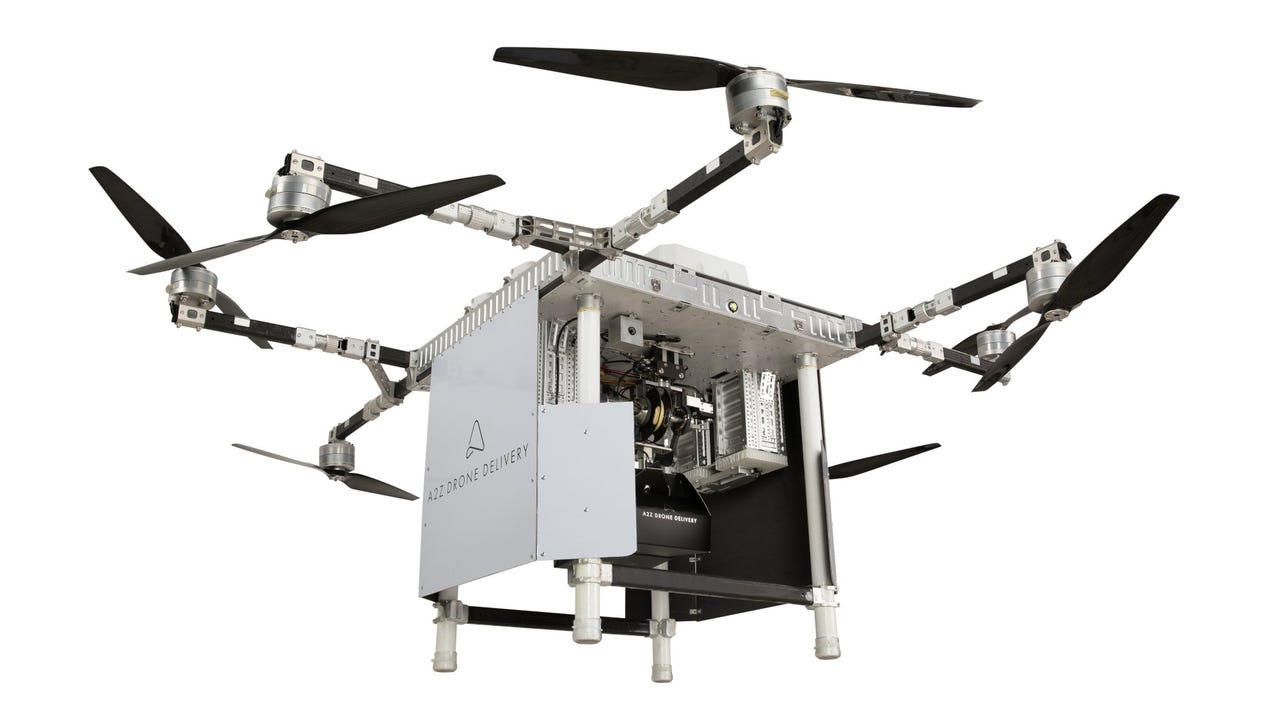































 A2Z
A2Z One of the big concerns about drone delivery concerns the spinning rotors, which are a huge potential liability to people, pets, and property if things go awry. But what if delivery drones didn't have to land?
That's the concept behind A2Z Drone Delivery, LLC's tethered freefall drone delivery mechanism, which is the backbone of its new drone, called the RDSX commercial delivery UAV. We've written about A2Z before and found the system novel. with the rollout of its commercial drone, the company is now formally entering the logistics sector, providing an interesting case study for the near future of drone delivery.
"Residential drone delivery pilot programs are coming online throughout the United States right now, and much of the industry is anxiously awaiting the large-scale regulatory approval that will see residential deployments rapidly expand," said Aaron Zhang, founder of A2Z Drone Delivery, LLC. "While the raw technical capabilities for these deliveries already exist, a key benchmark for regulatory approvals will be addressing the consumer comfort with UAVs being rolled out into daily life. Our tethered freefall delivery capability integrated with the RDSX offers a way to mitigate some of those consumer concerns."
Basically, A2Z designed a delivery drone by focusing on safety. Safety systems include an onboard parachute, Emergency payload abandonment, passive payload lock to safeguard against payload loss or tether slippage in case of unforeseen power fluctuations, pre-flight weight check, payload status detection, and rapid descent calculation.
The RDSX integrates A2Z Drone Delivery's tethered freefall Rapid Delivery System, which the company says is capable of quickly and safely delivering payloads from altitudes as high as 150ft. By keeping spinning rotors far from people and property, the idea is that the RDSX can help mitigate consumer concerns with drone deliveries. Beyond the safety considerations, these also include noise. A drone on your doorstep is pretty loud, but keeping delivery UAV high overhead will mitigate (if not eliminate) noise pollution.
"Working hand-in-hand with a logistics provider gave our engineers invaluable insights into how our customers will interact with the drone platform and allowed us to design the RDSX from the bottom up for the unique demands of commercial UAV deliveries," said Zhang. "Based on an extremely robust flight platform with hundreds of thousands of flight hours, the RDSX integrates our tethered freefall delivery mechanism to minimize time-on-station, reduce downtime and prioritize safety for the airframe, its payloads and the customers receiving packages."
As drone delivery clears regulatory hurdles in the U.S. and abroad, we're going to begin seeing more novel platforms coming online. Given the red hot logistics industry, it's going to be interesting to see how readily providers drone delivery. Logistics over the past decade has been dominated by Amazon, with others essentially following suit. Drone delivery, however, may present an interesting new opportunity for logistics providers to connect with and give an edge to smaller retailers and regional businesses that might benefit from a local drone delivery capability. Companies like RDSX are helping the next few shape up to be very interesting in the logistics sector.
 Tags chauds:
Innovation et Innovation
robotique
Tags chauds:
Innovation et Innovation
robotique